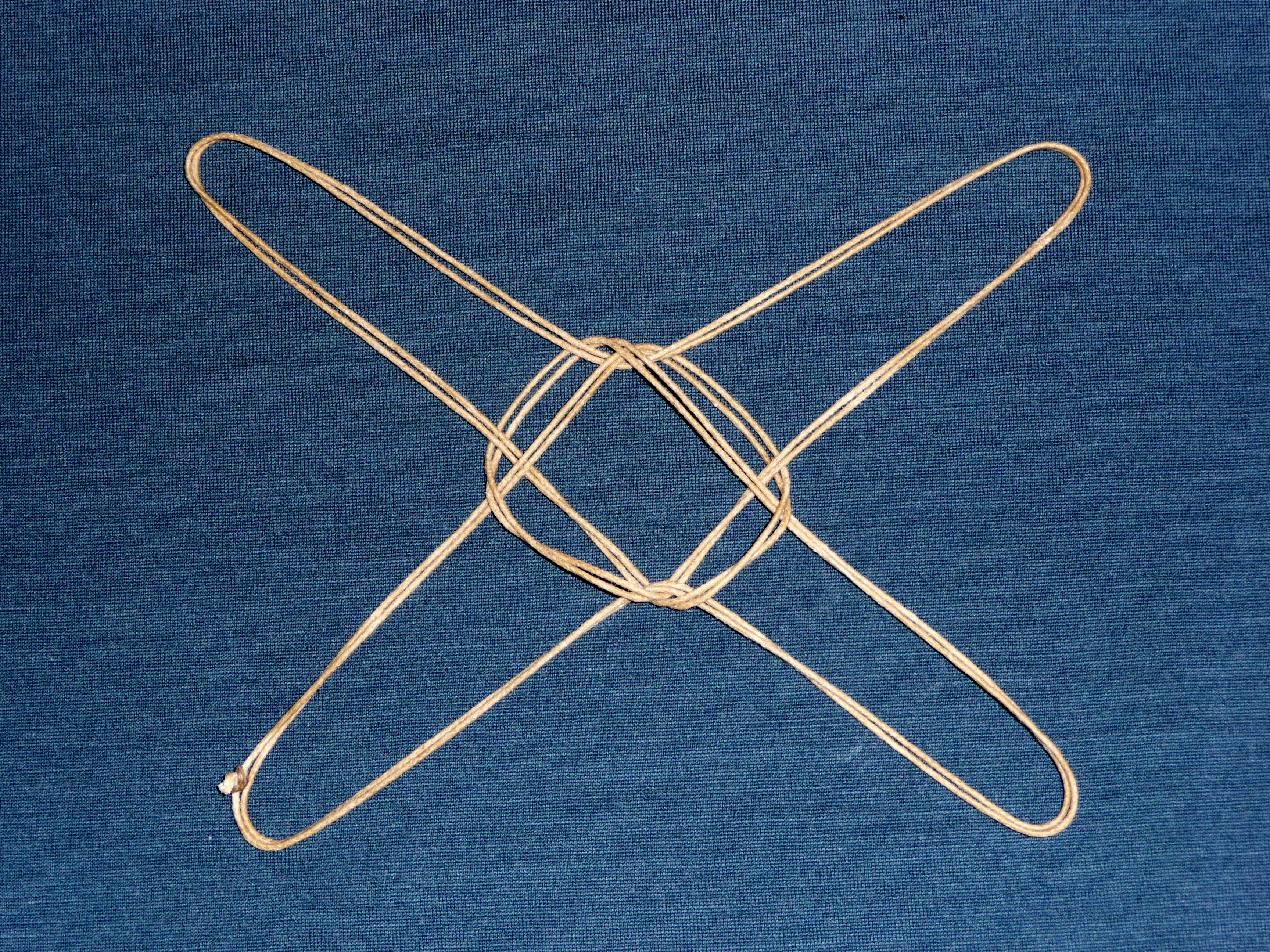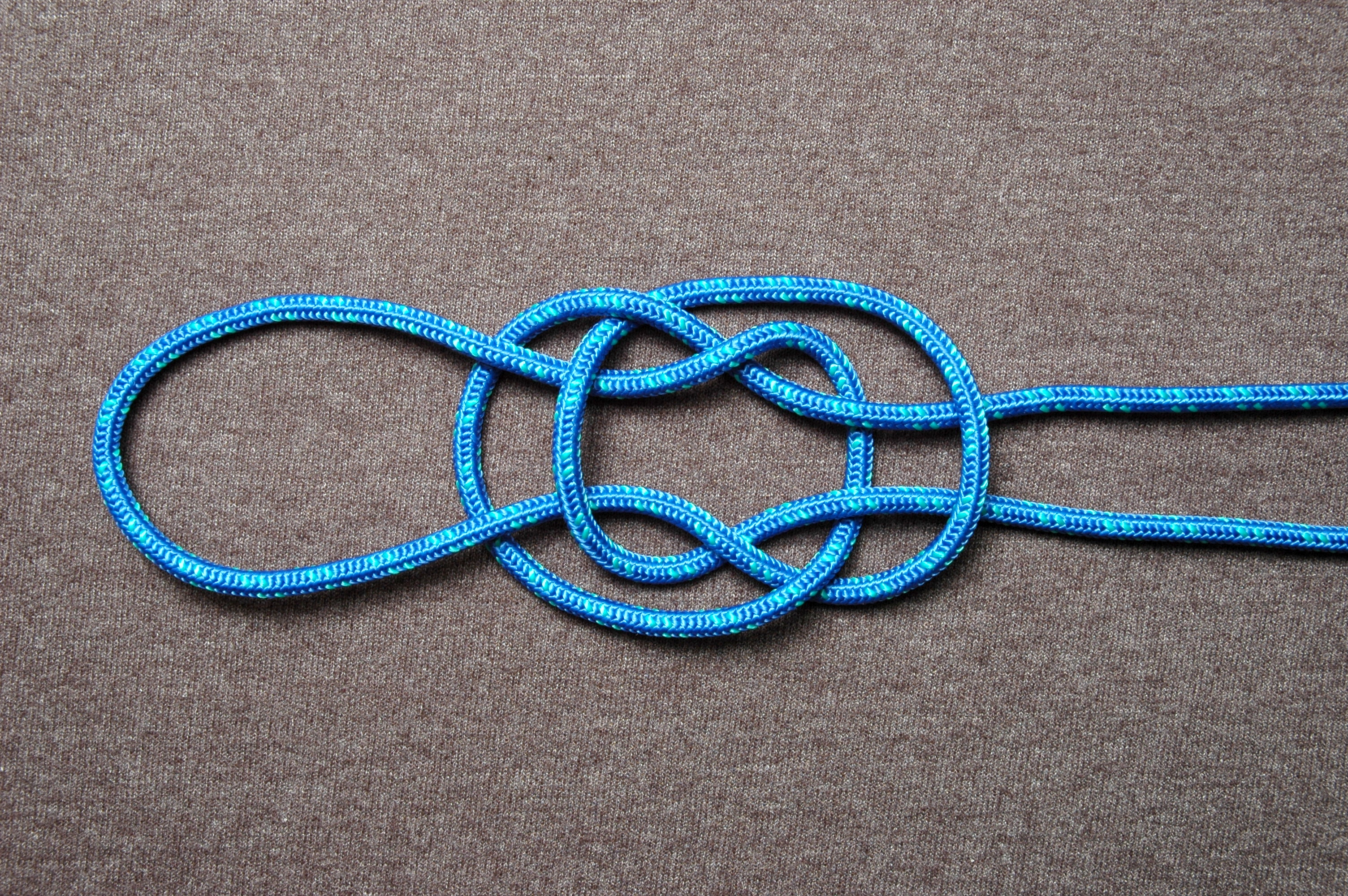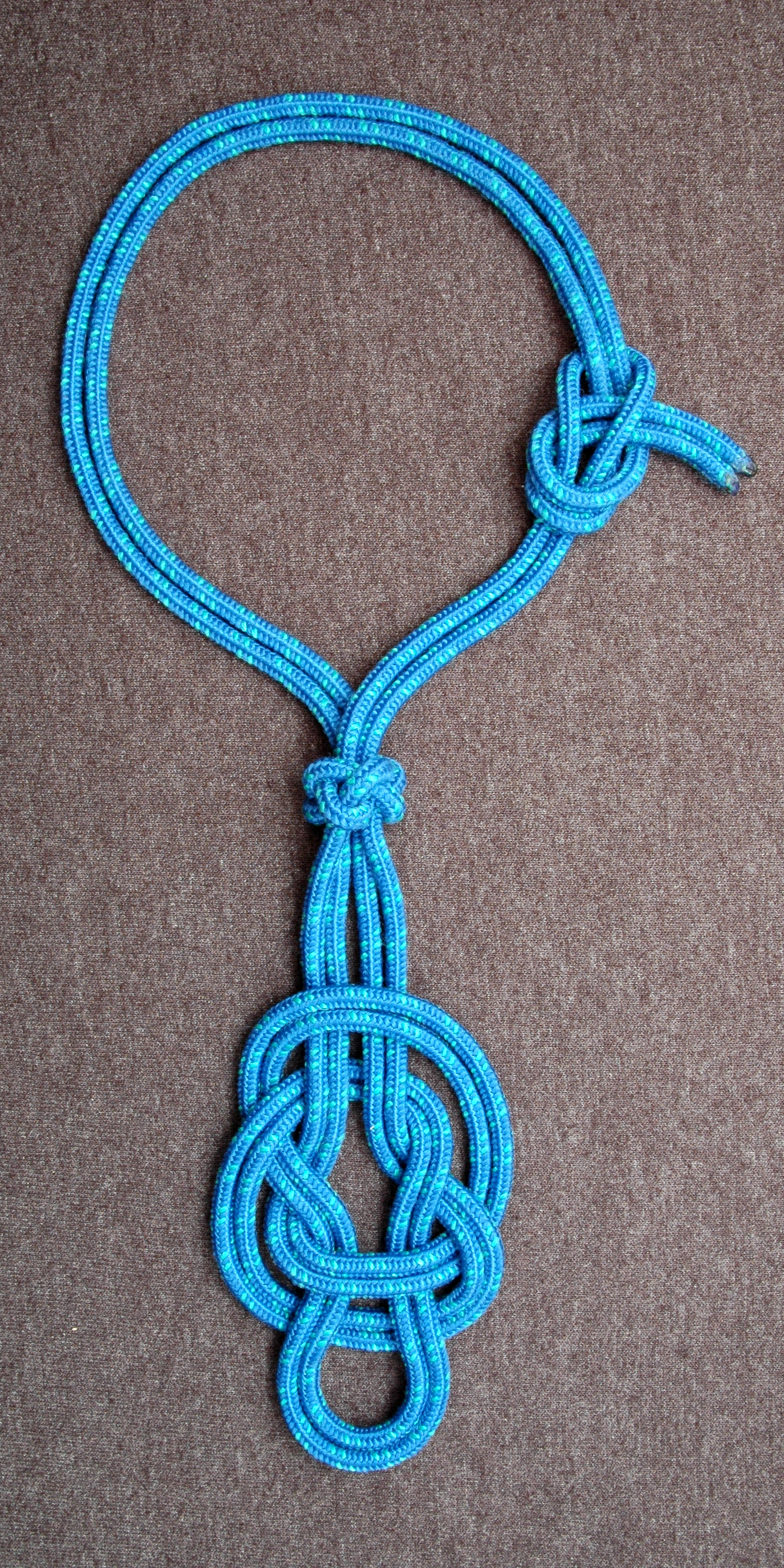|
Heraklas
Heraklas ( grc-gre, Ἡρακλᾶς) was a Greek physician of the 1st century AD whose descriptions of surgeons' knots and slings are preserved in book 48 of Oribasius' ''Medical Collections'' (Ἰατρικαὶ Συναγωγαί, ''Iatrikai Synagogai'') under the title ''From Heraklas''. Describing them in detail, Heraklas discussed 16 different knots and slings, including the earliest known written account of a string figure. Accompanying illustrations of the knots were added later by Renaissance copyists, but modern analysis of the writings by knot experts has shown many of these early drawings to contain significant errors or misinterpretations. The knots identified The current understanding of Heraklas' knots results primarily from analysis and identification by Hjalmar Öhrvall, Lawrence G. Miller, and Cyrus L. Day, although slightly differing interpretations and refinements continue to be made. The table below shows the knots believed to have been described by Her ... [...More Info...] [...Related Items...] OR: [Wikipedia] [Google] [Baidu] |
Heraklas Plinthios Brokhos Jaw Sling
Heraklas ( grc-gre, Ἡρακλᾶς) was a Greek physician of the 1st century AD whose descriptions of surgeons' knots and slings are preserved in book 48 of Oribasius' ''Medical Collections'' (Ἰατρικαὶ Συναγωγαί, ''Iatrikai Synagogai'') under the title ''From Heraklas''. Describing them in detail, Heraklas discussed 16 different knots and slings, including the earliest known written account of a string figure. Accompanying illustrations of the knots were added later by Renaissance copyists, but modern analysis of the writings by knot experts has shown many of these early drawings to contain significant errors or misinterpretations. The knots identified The current understanding of Heraklas' knots results primarily from analysis and identification by Hjalmar Öhrvall, Lawrence G. Miller, and Cyrus L. Day, although slightly differing interpretations and refinements continue to be made. The table below shows the knots believed to have been described by Her ... [...More Info...] [...Related Items...] OR: [Wikipedia] [Google] [Baidu] |
Oribasius
Oribasius or Oreibasius ( el, Ὀρειβάσιος; c. 320 – 403) was a Greek medical writer and the personal physician of the Roman emperor Julian. He studied at Alexandria under physician Zeno of Cyprus before joining Julian's retinue. He was involved in Julian's coronation in 361, and remained with the emperor until Julian's death in 363. In the wake of this event, Oribasius was banished to foreign courts for a time, but was later recalled by the emperor Valens. Works Oribasius's major works, written at the behest of Julian, are two collections of excerpts from the writings of earlier medical scholars, a collection of excerpts from Galen and the ''Medical Collections'' (Ἰατρικαὶ Συναγωγαί, ''Iatrikai Synagogai''; Latin: ''Collectiones medicae''), a massive compilation of excerpts from other medical writers of the ancient world. The first of these works is entirely lost, and only 25 of the 70 (or 72) books of the ''Collectiones'' survive. This work pres ... [...More Info...] [...Related Items...] OR: [Wikipedia] [Google] [Baidu] |
Bottle Sling
The bottle sling (also called a jug sling, a Hackamore knot, or a Scoutcraft knot) is a knot which can be used to create a handle for a glass or ceramic container with a slippery narrow neck, as long as the neck widens slightly near the top. While classed with binding knots, such as the reef knot and miller's knot, the bottle sling is able to perform a function for which most other binding knots are unsuited. The bottle sling's specific form allows it to grip a cylinder, assuming it has even a slight flare or collar, and lift it along its axis when the knot is loaded by all four strands. With appropriate size cord, most wine bottles can be reliably suspended with this knot. History The bottle sling was described in detail by the Greek physician Heraklas in his first century monograph on surgical knots and slings. It was included under the name ''diplous karkhesios brokhos'' ("double jug-sling noose"). Clearly familiar with the knot, Heraklas provided three distinct tying m ... [...More Info...] [...Related Items...] OR: [Wikipedia] [Google] [Baidu] |
String Figure
A string figure is a design formed by manipulating string on, around, and using one's fingers or sometimes between the fingers of multiple people. String figures may also involve the use of the mouth, wrist, and feet. They may consist of singular images or be created and altered as a game, known as a string game, or as part of a story involving various figures made in sequence (string story). String figures have also been used for divination, such as to predict the sex of an unborn child. A popular string game is cat's cradle, but many string figures are known in many places under different names, and string figures are well distributed throughout the world.Elffers, Joost and Schuyt, Michael (1978/1979). ''Cat's Cradles and Other String Figures'', p.197. . History According to Camilla Gryski, a Canadian librarian and author of numerous string figure books, "We don't know when people first started playing with string, or which primitive people invented this ancient art. We d ... [...More Info...] [...Related Items...] OR: [Wikipedia] [Google] [Baidu] |
String Figures
A string figure is a design formed by manipulating string on, around, and using one's fingers or sometimes between the fingers of multiple people. String figures may also involve the use of the mouth, wrist, and feet. They may consist of singular images or be created and altered as a game, known as a string game, or as part of a story involving various figures made in sequence (string story). String figures have also been used for divination, such as to predict the sex of an unborn child. A popular string game is cat's cradle, but many string figures are known in many places under different names, and string figures are well distributed throughout the world.Elffers, Joost and Schuyt, Michael (1978/1979). ''Cat's Cradles and Other String Figures'', p.197. . History According to Camilla Gryski, a Canadian librarian and author of numerous string figure books, "We don't know when people first started playing with string, or which primitive people invented this ancient art. We do ... [...More Info...] [...Related Items...] OR: [Wikipedia] [Google] [Baidu] |
Tom Fool's Knot
The Tom fool's knot, also known as the conjurer's knot, bow knot and Greek fool's knot, is a type of knot sometimes considered a handcuff knot, though usually considered somewhat inferior to it. It is a good knot with which to commence a slightly fancy sheepshank. It is also used as a trick knot due to the speed with which it can be made. The knot has a number of mainly decorative but also functional uses, such as sailing, boating, camping and restraining people. History Tom fool's knot is believed to be the knot ''"epankylotos brokhos"'' described by the 1st century AD Greek physician Heraklas. Tying It is formed by making two loops, not exactly overlaying each other. The inner half of each hitch or loop is pulled under and through the outer side of the opposite loop. See also * Handcuff knot, a similar knot sometimes incorrectly identified as a Tom fool's knot *List of knots This list of knots includes many alternative names for common knots and lashings. Knot names have ... [...More Info...] [...Related Items...] OR: [Wikipedia] [Google] [Baidu] |
Cow Hitch
The cow hitch, also called the lark's head, is a hitch knot used to attach a rope to an object. The cow hitch comprises a pair of half-hitches tied in opposing directions, as compared to the clove hitch in which the half-hitches are tied in the same direction. It has several variations and is known under a variety of names. It can be tied either with the end of the rope or with a bight. History A simple and useful knotted structure, the cow hitch has been known since at least the first century when described by Greek physician Heraklas in a monograph on surgical knots and slings. Known under a variety of names, this knot has been used both on land and at sea. The common alternate name "lark's head" is attributed to Tom Bowling (pseudonym) in the 1866 work ''The Book of Knots'' which is presumed to have been adapted from a French manuscript; lark's head is a literal translation of the French name for the knot, ''tête d'alouette''.Ahsley, p. 11. Variations The underlying ... [...More Info...] [...Related Items...] OR: [Wikipedia] [Google] [Baidu] |
Reef Knot
The reef knot, or square knot, is an ancient and simple binding knot used to secure a rope or line around an object. It is sometimes also referred to as a Hercules knot. The knot is formed by tying a left-handed overhand knot between two ends, instead of around one end, and then a right-handed overhand knot via the same procedure, or vice versa. A common mnemonic for this procedure is "right over left; left over right", which is often appended with the rhyming suffix "... makes a knot both tidy and tight". Two consecutive overhands tied as described above of the same handedness will make a granny knot. The working ends of the reef knot must emerge both at the top or both at the bottom, otherwise a thief knot results. The reef knot is not recommended for tying two ropes together, because of the potential instability of the knot when not stabilized; something that has resulted in many deaths (see Misuse as a bend). Naming The reef knot is at least 4,000 years old. The n ... [...More Info...] [...Related Items...] OR: [Wikipedia] [Google] [Baidu] |
Caroline Furness Jayne
Caroline Augusta Furness Jayne (July 3, 1873 – June 23, 1909) was an American ethnologist who published the first book on string figures in 1906 titled ''String Figures: A Study of Cat's Cradle in Many Lands''. Early life and education Jayne was born on July 3, 1873, the youngest of the four children and only daughter of Shakespearean scholar Horace Howard Furness and author Helen Kate (Rogers) Furness. She grew up in the family's house in Washington Square in Philadelphia, and at Lindenshade, their summer house in Wallingford, Pennsylvania. She graduated from the Agnes Irwin School. Career Jayne became interested in string figures through her brother, William Henry Furness III's anthropology work with Alfred Haddon studying native cultures where string game figures were used. Jayne was the first to create a popular study of string figures built on academic papers from journals such as''The Annual Report of the Bureau of Ethnology''. the ''Proceedings of the Royal Ge ... [...More Info...] [...Related Items...] OR: [Wikipedia] [Google] [Baidu] |
1st-century Greek Physicians
The 1st century was the century spanning AD 1 ( I) through AD 100 ( C) according to the Julian calendar. It is often written as the or to distinguish it from the 1st century BC (or BCE) which preceded it. The 1st century is considered part of the Classical era, epoch, or historical period. The 1st century also saw the appearance of Christianity. During this period, Europe, North Africa and the Near East fell under increasing domination by the Roman Empire, which continued expanding, most notably conquering Britain under the emperor Claudius (AD 43). The reforms introduced by Augustus during his long reign stabilized the empire after the turmoil of the previous century's civil wars. Later in the century the Julio-Claudian dynasty, which had been founded by Augustus, came to an end with the suicide of Nero in AD 68. There followed the famous Year of Four Emperors, a brief period of civil war and instability, which was finally brought to an end by Vespasian, ninth Roman emperor, a ... [...More Info...] [...Related Items...] OR: [Wikipedia] [Google] [Baidu] |
Knots
A knot is a fastening in rope or interwoven lines. Knot may also refer to: Places * Knot, Nancowry, a village in India Archaeology * Knot of Isis (tyet), symbol of welfare/life. * Minoan snake goddess figurines#Sacral knot Arts, entertainment, and media Films * ''Knots'' (film), a 2004 film starring Scott Cohen and Annabeth Gish * ''Knots'', a 2011 film starring Kimberly-Rose Wolter Music * Rosette (music), soundhole decoration on string instruments * ''Knots'' (Sons of Noel and Adrian album), a 2012 album by Sons of Noel and Adrian * ''Knots'' (Crash of Rhinos album), a 2013 album by Crash of Rhinos * ''Knots'' (EP), a 2018 extended play by Moira Dela Torre and Nieman Gatus * "Knots", a song by Gentle Giant Other uses in arts, entertainment, and media * KNOT, a radio station in Prescott, Arizona, United States * ''Knots'', a 1970 book of poetry by R. D. Laing Biology * Red knot, a wading bird (simply called "knot" in Europe) * Great knot, a wading bird * Trigger poi ... [...More Info...] [...Related Items...] OR: [Wikipedia] [Google] [Baidu] |
Medicine In Ancient Greece
Ancient Greek medicine was a compilation of theories and practices that were constantly expanding through new ideologies and trials. Many components were considered in ancient Greek medicine, intertwining the spiritual with the physical. Specifically, the ancient Greeks believed health was affected by the humors, geographic location, social class, diet, trauma, beliefs, and mindset. Early on the ancient Greeks believed that illnesses were "divine punishments" and that healing was a "gift from the Gods". As trials continued wherein theories were tested against symptoms and results, the pure spiritual beliefs regarding "punishments" and "gifts" were replaced with a foundation based in the physical, i.e., cause and effect. Humorism (or the four humors) refers to blood, phlegm, yellow bile and black bile. Each of the four humors were linked to an organ, temper, season and element. It was also theorized that sex played a role in medicine because some diseases and treatments were diffe ... [...More Info...] [...Related Items...] OR: [Wikipedia] [Google] [Baidu] |






